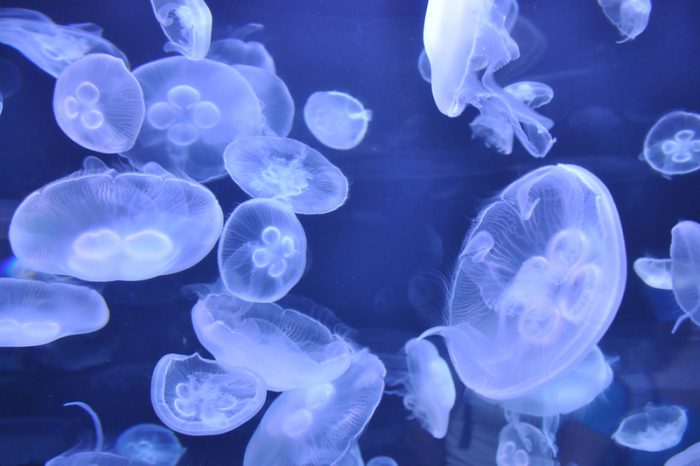Quick, name the fastest ocean animal.
A dolphin? A mako shark? A black marlin?
If you said black marlin, you're actually right! But one animal we're very sure none of you said (unless you were just having a laugh) is jellyfish. Why?
Because everyone knows that jellyfish are slow, slow, slow. See?
But speed isn't everything. There's also efficiency, or how much energy an animal uses to move. Jellyfish are efficient. Few animals use less energy to get around than jellies do.
And Nicole Xu, a Ph.D. student at Stanford University in California, is putting their efficiency to the test with a new experiment. Bionic jellyfish.
What are bionics?
This pacemaker isn't much bigger than a dime, but its electric pulses can save a life. (Getty Embed)
As a quick recap, bionic describes any living thing that has artificial body parts. Especially electromechanical ones. In other words, animals with machines attached.
Certain humans are the most common bionic creatures. People can have prosthetic limbs or devices such as a pacemaker, which maintains a steady heartbeat in someone with an irregular heart.
The pacemaker works by sending out regular electric pulses into a muscle — these pulses cause the heart to contract and pump blood. And this kind of technology can be used in other animals, too. In the case of our jellyfish, Nicole is using it not to pump a heart, but to pump its 'bell' that jellies use to get around.
In her study, Nicole discovered that by attaching an electrode device to the animal, she could use pulses to have the animal swim up to three times faster than normal.
Why jellyfish?
Jellyfish — the original energy-efficient vehicle! (Getty Embed)
That sounds cool, but why jellyfish? According to a recent interview with CBC Radio's Quirks and Quarks, jellies could be used to design super-efficient robot probes that could explore the world's oceans and gather data.
"Jellyfish are very energy efficient creatures," she told the show. "So if you're looking to create a robot that is very low power, you want to send these out into the ocean to monitor things and keep track of climate change, then jellyfish are the perfect model organism."
So could our future be full of tiny jellyfish-style robots that gather data about the oceans? Sounds neat!
Are they harmed?
This was the one thing that we thought when we heard about these bionic jellyfish. Does the electrode device hurt them?
For one, jellyfish do not have brains or pain receptors. They do secrete a mucus when they are feeling stressed though. Nicole and her fellow researchers have not seen any of this telltale goo, so they believe that the animals are doing just fine.
Watch these bionic jellyfish swim for yourself in the video below.
‘We could send these bionic jellyfish to different areas of the ocean to monitor signs of climate change or observe natural phenomena,’ said Stanford University bioengineer, Nicole Xu https://t.co/rds3eQxk0C pic.twitter.com/8uxqfAgy9B
— Reuters (@Reuters) January 31, 2020
 Could the newest robot probe really be based on these critters? (© Enrique Gomez Tamez - Dreamstime.com)
Could the newest robot probe really be based on these critters? (© Enrique Gomez Tamez - Dreamstime.com)










Underwater terminator. Oh boy.